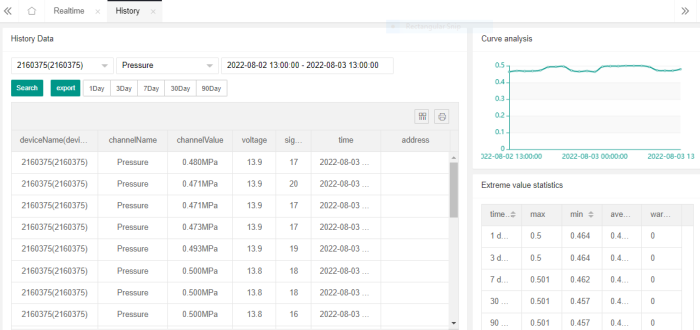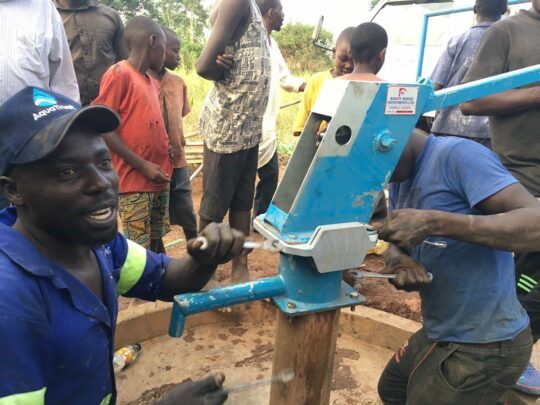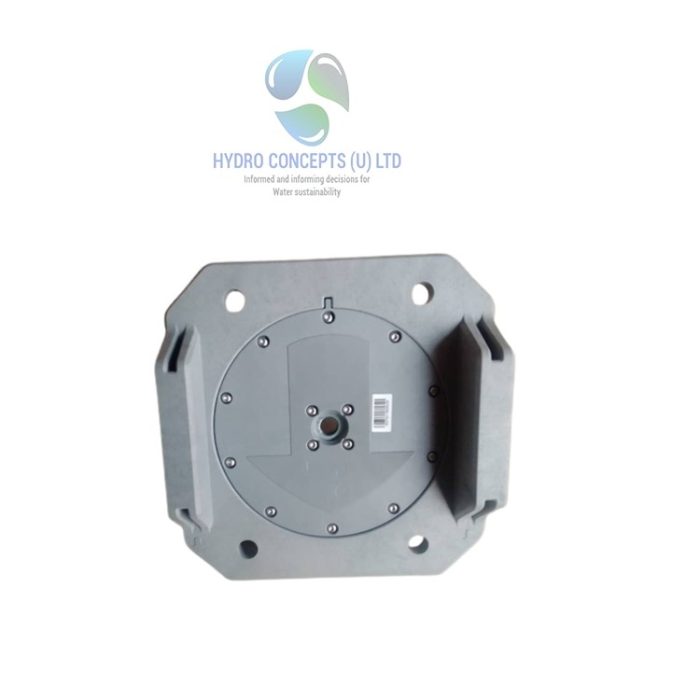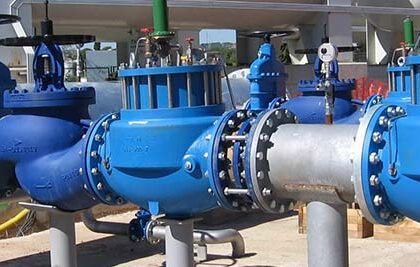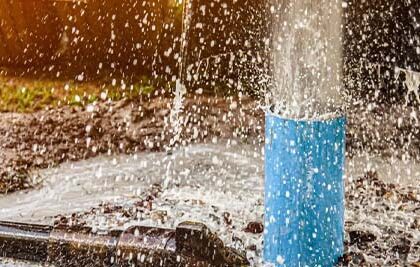Abstract
Owing to its relatively stable yield of high-quality water, groundwater has emerged as an extremely important water resource for meeting domestic, industrial, agricultural and environmental demands. Although groundwater is often relatively well protected from pollution, poor management has resulted in negative impacts such as declining aquifer heads, quality deterioration, and irrational abstraction rates. Uganda has approximately 40,000 deep boreholes, 30,000 protected springs, and 16,000 shallow wells.
A total of 73 of the 98 operational water supply systems are dependent on groundwater, accounting for around 75% of all towns and cities. In Kampala City, several industries are reliant on groundwater, including mineral water and chemical industries. The indiscriminate disposal of industrial waste to the ground, coupled with over abstraction by high yielding electric pumps necessitates a renewed focus on groundwater monitoring.
This study examined efforts by several actors undertaking groundwater monitoring, using data loggers, smart sensors, and other telemetric real-time monitoring systems. Major findings from the study reveal that monitoring data is generated across a range of stakeholders in public, private, and non-profit sectors, with efforts largely uncoordinated. The data is rarely stored for future use as it is lost along the way.
The study recommends that the different stakeholders develop a coordinated and clear data collection, storage, and retrieval system and a systematic database and arrangement for data sharing via the internet be established. The research concludes that there is clearly an unmet need; hence a national effort to track groundwater monitoring data over the long-term is vital given its wide applicability to water resource issues commonly faced by hydrologists, engineers, regulators, and resource managers.
It calls for an immediate establishment of a more rigorous and systematic nationwide approach to groundwater monitoring, clearly an elusive goal thus far. The time is right for progress towards this goal.
Introduction
Groundwater has become central to human development over the course of a few decades. However, using groundwater for sustainable development faces a paradoxical challenge. On the one hand, 1.7 billion people live in areas where groundwater resources are overexploited (Gleeson et al., 2012) and an unknown number are experiencing pollution problems and degradation of groundwater dependent ecosystems. In Uganda, these have resulted in over-pumping; land subsidence, and waterborne diseases among many other challenges.
Another large group of challenges is the rapid growth of pollution pressures on groundwater. There is widespread evidence of deteriorating groundwater quality associated with the leaching of agrochemicals, seepage of urban and industrial effluents, concentrated volumes of urban sewerage and waste contaminating groundwater due to poorly designed collection and treatment systems, contamination by on-site sanitation systems, and irresponsible disposal of hazardous waste. Such pollution undermines human well-being and limits the options of groundwater use. Groundwater quality problems tend to be extremely persistent, and often too costly or technically impractical to remediate. There is a growing pressure on the entire ‘subsurface space’.
Numerous problems such as water table drawdown, decreasing well yield, land subsidence, and salinity intrusion that have emerged as the results of over-exploitation of groundwater may incur socioeconomic losses and disturb development of the affected areas of Uganda. These problems are either irreversible in nature or require extended periods to abate. Therefore, there is an urgent need to consider how this precious resource can be conserved, while taking full advantage of it for the development of the country. This calls for coordinated national groundwater monitoring efforts to capture such ‘time variant data’; that is key to inform measures that can help improve the performance of groundwater.
Groundwater Monitoring in Uganda
Every year, between 1000-1500 boreholes and around 900 shallow wells are drilled in Uganda. Just like many other countries, systems of water permits were introduced in recent decades to control water use, but the over-exploitation of groundwater has defied solution.
This calls for groundwater monitoring, as an intervention of fundamental importance, especially in such a situation where the groundwater resources are threatened by over-exploitation and quality deterioration. Groundwater monitoring and groundwater data acquisition are pre-requisites for any effective management of groundwater resources, as monitoring makes groundwater visible.
Monitoring may include the quality and availability of the resource itself, and compliance with abstraction and disposal regulations and permits. In the absence of monitoring, groundwater abstraction and waste disposal take place without any safeguard for this essential resource, and excessive use and contamination of aquifers may continue unchecked for years until the groundwater resource is effectively destroyed.
Groundwater monitoring can involve groundwater-level monitoring, for which the principal purposes are to provide data about groundwater system behavior and overall impacts on the groundwater situation caused by groundwater exploitation and other interventions. Alternatively, it can be groundwater-quality monitoring, which provides information on the chemical status of groundwater systems and the effects on groundwater quality, and establishes the presence of any significant upward trend in pollutant concentrations and the reversal of such trends.
In Uganda, monitoring of groundwater in terms of pumping rates, water levels, and water chemistry is part of the conditions attached to groundwater abstraction permits. Thus, every permit holder has to monitor these parameters and submit a report to government on a quarterly basis or else his permit will be cancelled. The government maintains a national monitoring program for key strategic areas. If monitoring indicates a problem, the government takes action through reducing allowable pumping rates as part of the national groundwater regulation strategy. Despite all these initiatives, capacity constraints for groundwater monitoring exist, including a lack of monitoring equipment, limited technical capacity for monitoring, limited capacity for data analysis and interpretation, and limited capacity for monitoring of compliance to permit conditions.
Groundwater monitoring offers numerous benefits such as facilitating the early warning of the onset of groundwater pollution, and allowing the timely introduction of any necessary control measures. Additionally, data sales for monitoring data enable the regulator to raise revenues, while fines and charges from those who exceed specific thresholds under the “polluter pays principle” are also a source of revenue to the regulator. Without monitoring data, there would be no evidence for the regulator to make these charges and penalties.
For any groundwater monitoring system to be effective, it should be driven by a specific objective and the data collected should not only be used for the explicit purpose of the monitoring program, but should also be systematically stored for future use. While almost all boreholes drilled in Uganda have their baseline data recorded and stored, it remains to be known if ongoing monitoring (providing ‘time series data’) and data storage are satisfactorily undertaken. This is key since these parameters are bound to change as the aquifer becomes more heavily used, in which case groundwater monitoring becomes essential, with an objective to understand changes taking place in the groundwater resource overtime.
Against this backdrop, a number of donors, non-profits, and public entities have recently adopted a number of groundwater monitoring mechanisms, to track changes in both water level and water quality. Though these efforts are still in infancy, they are slowly gaining attention from sector experts, donors, and regulatory agencies. It is against this background that this research was initiated to learn more about their motivations, experiences, and policy constraints in undertaking groundwater monitoring.
This article sets out to answer the following questions:
- What are the monitoring objectives of the different entities, and what parameters do they monitor?
- What kind of data is collected and for how long is such data stored?
- What is the frequency of data collection and with whom is such collected data shared?
- What are the major challenges that hamper effective groundwater monitoring?
- What is the effectiveness of water policy legislation and implementation of water safety plans?
The proceeding chapters discuss to detail, the methodology, results, recommendations, and conclusions from the research study.
Methodology
The research study employed a multipronged approach to gather information from various sources. The first prong involved reviewing existing research on the subject, mainly monitoring reports, project reports, and peer-reviewed papers.
The second prong employed virtual interviews with a number of manufacturers that offer groundwater monitoring instrumentation and related telemetric equipment.
The third prong involved face-to-face key informant interviews with representatives from relevant stakeholders such as non-profit entities, public entities, and private companies undertaking groundwater monitoring instrumentation (See Figure 1 for a breakdown) in order to discover their monitoring objectives, experiences, and recommendations.
Questions asked had to do with why they undertake groundwater monitoring, how long they store the data, with whom they share the data, how they use the generated data, technical competency of in-house staff to undertake monitoring, parameters monitored and datasets captured, and to whom the data are reported.
The data received were analyzed in line with the study objectives in order to draw out conclusions and recommendations.
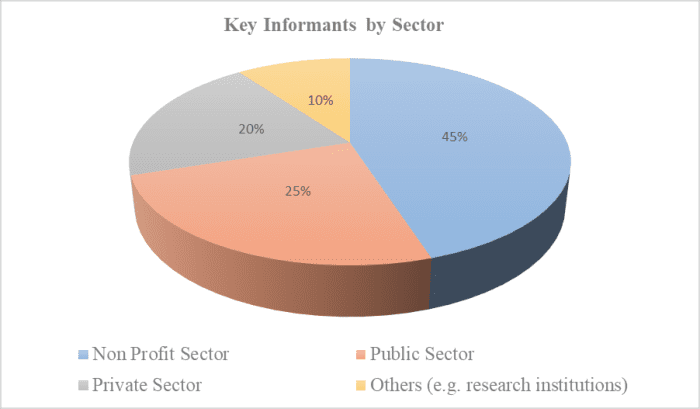
Figure 1: Respondents interviewed during key informant interviews, by sector
Results
Objective 1: What are the monitoring objectives and parameters?
The study unveiled that a number of monitoring objectives and parameters are monitored, which include groundwater level, electrical conductivity, spatial and temporal distribution of water quality, natural recharge and discharge, flow rates, abstraction rates, and user compliance with both abstraction and effluent discharge permits.
The monitoring of these parameters helps to present early warning of potential risks and the need for mitigation measures, real use accounting of water use and compliance with regulatory guidelines. The data collected once analyzed informs decision making on the appropriate measures to enable sustainability and improved performance of the ground water sources.
Specifically, the output from analysis of the logged data indicates:
- the depth to the water table from the ground level, which provides information of an increase/decrease in the water table;
- the electrical conductivity, which informs if the water conforms to the set national drinking water standards;
- the spatial and temporal distribution of water quality, which provides information on water quality variations and helps determine the main contamination sources;
- the natural recharge and discharge data, which gives insight into how groundwater recharge, storage, and discharge are affected by climate changes and anthropogenic influences. This data is very crucial in detecting climatic and environmental change;
- the flow rate data, which is essential to detect increase or decrease in water volume, providing indicators to either flow path changes or alert to potential surface level flooding;
- the user compliance data, which is essential for assessing contaminants and suitability for use. In addition, this information is used as a basis for imposing fines and penalties for non-compliance with water abstraction limits and wastewater discharge standards; and
- the well recovery of the motorized wells, which presents a measure of how long it takes for the water level to regain and the safe pumping yield.
Objective 2: What kind of data is collected and what is the storage duration?
The study discovered that the kind of data collected slightly differed between different entities. However, for private drilling companies, most data collection on groundwater is done at the time of drilling, which is then submitted to the Directorate of Water Resources Management (DWRM) as required by law.
The data submitted are mainly geological log and geophysical data on static water level, borehole identification, well yield, water strikes, and borehole construction information (i.e., depth, diameter, casing, and water quality).
Ongoing monitoring is rarely, if ever undertaken, yet these parameters can be expected to keep changing as the well is used. Updated information is key to maintain awareness of and mitigate challenges as well as guide future borehole constructions in the area.
Smart hand pump sensors, undergoing field trials by the International Lifeline Fund (ILF) and Charity Water, offer daily and weekly reports on volume of water pumped, pump breakdown, and downtime. This enables faster dispatch of hand pump mechanics to undertake repairs.
The smart sensor transmits data via GSM enabled networks on the number of strokes required to fill a jerrycan, which gives insight into pump health, thus facilitating preventive maintenance programs.
Each sensor can accommodate up to ten years of reporting data. Though still in its infancy, this is a promising innovation for rural groundwater monitoring for India Mark II hand pumps.
Through routine email notifications, water managers receive red flags in case there is a significant drop in the normal volume of water registered at the hand pump, or in the case of any pump breakdown. This offers transparency and accountability to donors on the systems they establish.
Objective 3: What is the frequency of data collection and with whom is the data shared?
The study discovered that baseline data is collected for every borehole drilled beyond 30m. This includes hydrological logs and well pump installation data. However, time variant data from the monitoring of water well abstraction, water quality, and groundwater level are rarely given attention. This baseline data collected for every borehole drilled is shared with DWRM on a quarterly basis and can be accessed by the public at a fee.
A handful of non-profit entities have initiated efforts to undertake systematic groundwater-level monitoring, the efforts of which are still in their infancy. These provide continuous recording of time variant data, which is done by submersible probes (telemetric systems), that are programmed to record and relay water level and water quality data according to customized intervals, ranging from every 15 minutes to 24 hours, depending on client needs.
This is a trade off in battery conservations, since short term time intervals would need much frequent battery replacement compared to extended time intervals. It is worth noting that while such interventions are beginning to take root, they are rarely initiated preemptively, hence the chronic lack of reliable data on groundwater trends and conditions persists.
The study noted that most non-profit entities mainly undertake water-level monitoring, while water-quality monitoring is rarely given attention, unless necessitated by an outbreak of a waterborne disease such as typhoid or cholera.
This is thus undertaken as a reactive measure, rather than a proactive measure. Most data generated is mainly shared internally within the same organization or through periodic reports to project donors.
Even then, it is scattered in different project reports, with no central data repository. This fragmented data has always been lost in cases of staff turnover and misplacement of project documents.
The data collected by the smart hand pump sensors being piloted by International Lifeline Fund and Charity Water are shared with donors for accountability and transparency since they provide details on number and frequency of hand pump breakdowns, repairs made, and downtime.
After the data is transmitted to donors and water managers, they are able to react accordingly by sending hand pump mechanics to effect repairs, or any other actions deemed necessary. Smart hand pump sensors are a preventative maintenance program meant to improve supply reliability and sustainability of rural water points, by reducing the number of hand pump breakdowns and minimizing the time it takes to repair them, both of which are vital to improve access to rural water services.
Objective 4: What are the major challenges hampering effective groundwater monitoring?
Technical capacity constraints.
In the study, it was widely noted that there were glaring gaps in staff technical capacity. Most entities lacked adequate qualified staff with knowledge of or even the skills to undertake groundwater monitoring.
A surprising example was the non-profit sector (largely operating in refugee settlements and rural remote settings), which mostly employs sociologists to run their Water, Sanitation, and Hygiene (WASH) programs, sidelining the need for water and civil engineers that are technically competent to ensure the sustainability of these systems.
As a result, sociologists place emphasis on non-technical indicators such as gender equity in water access, number of water points set up in a specific community, number of households with access to sanitation, and volume of water supplied per day.
In the end, technical issues that are key to water sustainability (in terms of both quantity and quality, sustainable abstraction rates, water safety and security planning) are neglected, which leads to premature failure of these systems.
The challenge is compounded by the fact that system design and construction is always undertaken by external consultants and contractors, who then handover to the WASH officers for routine management.
Unfortunately, their focus as non-water professionals is on socio-behavioral aspects, and have little to do with monitoring and understanding water quality and effects of over-abstraction on the sustainability of such systems. These come in as second thoughts in such instances when a problem arises such as system breakdown, disease outbreak, pollution concerns, declining well yields, thus taken as reactive measures.
Private companies decried the shortage of instrumentation engineers adequately skilled in the installation and configuration of some of the latest telemetric systems. Owing to this “monopoly of skills”, the few instrumentation engineers charge exorbitant professional fees ranging from $250-$400 for every system installed and configured.
The professional fees are unrealistic and prohibitive by Ugandan standards; which discourages private companies from undertaking these projects.
Financial capacity/budget constraints.
There are financial limitations, especially in the case of DWRM where, with the upgrading of manual to telemetric stations, communication costs for data transmission escalated with no corresponding provision under the recurrent budget.
Most entities relying on remote telemetric devices have to pay monthly subscription fees (either software or big data platform fees) in order to access the big data platforms/online dashboards that house real time and historical datasets.
Subscription fees range from $4-$7 per device per month, depending on the service provider, which proved significant, especially for organizations that have many devices installed. Additionally, they may incur costs for periodic replacement of batteries, and field facilitation to download the data (or take readings) for the case of analog recording systems (i.e. divers and submersible probes).
Some monitoring devices require field presence to collect data. As such, full-time staff have to be employed to take daily readings of various meters, and other data recording instruments.
Financial compensation of gauge station meter readers proved a significant cost. For DWRM, this resulted in low motivation, which in turn led to poor quality data from the stations.
Functionality challenges.
Most groundwater monitoring stations are prone to cases of vandalism, flooding, and reconstruction works owing to the nature of their locations. It was noted that while DWRM has over 30 groundwater stations, functionality remained at 80% with non-functionality attributed to these factors.
This was a major setback as non-functionality resulted in data gaps that could not easily be compensated for by traditional gap filling techniques or modeling. Hence, the general reliability of the data generated to make conclusive water management decisions was significantly affected.
Lack of harmonized standards, as well as data sharing platforms.
Throughout the study, a resounding theme among all participants was the lack of common, universally accepted standards of collecting data, let alone a common platform for sharing data among various entities.
Without monitoring being undertaken with universally laid out procedures for monitoring, data collection and storage, quality control, parameter analyses, and data interpretation, such data is incomparable. There was lack of collaboration between entities on this issue, largely due to the active competition between the entities that restricted the sharing of data.
As such, monitoring data exists, but scattered over different organizations. In most cases, this was fragmented and lacked continuity as it had been gathered on a project-by-project basis. Furthermore, the collected data was not collated in central systems or digitalized, a factor that broke the continuity and anchorage of information with staff exits and project closures.
Lack of data/information readily available in digitalized formats.
In many agencies, large backlogs of historical water-level and water-quality data have not been entered into electronic databases, let alone made available online. Consequently, potentially useful data are residing in paper files where accessibility and utility are very limited.
In any case, there is lack of compatibility in terms of standards, quality assurance, electronic access, and data transfer. This limits accessibility, information transfer, and exchange, as well as the rapid retrieval and transmission of water-level and water-quality data. This in turn limits the ease and speed with which groundwater level data can be updated and made available to users.
Project inertia i.e. laggards in adoption and scale up of digital systems.
When rolling out any new cutting-edge technology-based solutions like digital remote groundwater monitoring systems, there is usually unease and discomfort that streams from challenging the status quo, coupled with the anxiety that comes with learning new processes.
The transition from manual to digital remote groundwater monitoring systems has not been an exception to this rule. More awareness creation campaigns are needed, to encourage more water managers to learn, appreciate, and embrace these systems and the game changing benefits they offer.
Such adoption tailored programs are key, especially during this phase of transition, so as to build confidence and adaptability with both hardware and software systems.
Objective 5: What is the effectiveness of water policy legislation and implementation of water safety plans?
Weak, fragmented, incoherent, and unenforceable policies.
There exists weak policy enforcement on the design standards for onsite sanitation systems. Poorly designed, constructed, and maintained onsite systems continue to contaminate groundwater, while the lack of monitoring systems on water drawn from these sources leads to severe human health and ecological consequences.
For instance, Murphy et al., 2017, reported that over 60% of groundwater sources tested in Kampala were positive for Escherichia coli (E. coli), which is commonly attributed to fecal contamination, during a typhoid outbreak in 2015 that affected over 10,000 people.
The scale and nature of the contamination and associated risks increase in complexity with a growing population. The failure to address groundwater resource challenges, such as the increasing stress of resources due to contamination by on-site sanitation in peri-urban areas, can be attributed to weak legislation and a lack of data on groundwater-quality monitoring.
Ineffective enforcement of penalties for non-compliance to water-abstraction limits and wastewater discharge standards.
The study noted ineffectiveness in the active enforcement of compliance requirements to water-abstraction limits and wastewater discharge standards. The National Water Act and National Wastewater Discharge Regulations do clearly spell out penalties for permit holders who exceed their abstraction limits or discharge wastewater to the environment that does not meet the set standards.
However, permit holders have not been encouraged to put in place monitoring systems that capture data on the volume of water abstracted, as well as the quality of wastewater discharged to the environment.
This makes it practically impossible for the regulatory agencies to penalize offenders, owing to lack of reliable monitoring data that would serve as factual evidence.
Lukewarm adoption of water safety plans.
The study noted that the adoption of water safety plans was far below the barest minimum standards, which exposes many water users to a number of public health concerns.
There is lack of active consideration and implementation of water safety plans in most water supply systems as emphasized by the World Health Organization (WHO) in 2006.
This water-quality monitoring requirement believes that the most effective means of consistently ensuring the safety of drinking-water supply systems is by comprehensive risk assessment and risk management approaches that encompass all steps in water supply from catchment to consumer.
This approach is based on scientific studies that showed that traditional water quality monitoring often produces results which are too little and too late.
- Too little, because so few samples are taken compared to the amount of water produced.
- Too late, because usually by the time the results are available, the water has been supplied and may have been consumed.
Despite this mandatory requirement by the WHO, there are no national binding policies and regulations for water supply utilities to ensure the active and consistent implementation of water safety plans on water supply systems.
As a result, this compromises the quality of drinking water supplies to communities, occasionally leading to waterborne epidemic outbreaks as cholera that lead to loss of lives.
Discussion and Recommendations
Capacity gaps and the need for capacity building programs.
There is a lack of technical capacity to implement monitoring. In many organizations, staff did not have skills and scientific understanding to translate the data and its analysis into clear conclusions and recommendations on the needed groundwater management actions. i.e., converting analytics to decision support.
The study recommends training in groundwater knowledge management, to ensure the collected groundwater data informs science-based management of groundwater resource. Staff should be trained to process data and view a variety of factors associated with the condition of the groundwater resource, i.e., effectively transform raw data into indicators.
Such training has to do with interpretation and analysis of the data collected, understanding of the operation of monitoring sensors, and applicable software.
Generally, trained technical personnel in groundwater instrumentation are not readily available in adequate numbers in all entities. Most have minimal trained individuals at professional and technical level or remain severely under-resourced, especially for telemetric systems.
The study recommends that technical staff receive special training in the use of the equipment, i.e., technicians who interact with the systems from time to time may require advanced technical engineering skills.
Entities should begin by identifying critical skill deficits and training needs in the use of technologies, equipment, and software. Suffice to say, capacity building should be a long-term process, which should be phased in to accommodate the requirements and constraints of national government, changing technologies, and hydrological innovations.
This calls for periodic water technician and management training, and ongoing in-house training on special topics related to integrated groundwater management. Entities should draw WASH officers from both the sociology and civil engineering backgrounds, to ensure complementary skillsets, key for holistic and effective management of water systems.
Financial capacity constraints and adoption of telemetry systems.
For the same lack of financial capacity, most entities undertake monitoring only when there is a perceived threat to the groundwater. This is in such instances of declining yields, large declines in water levels, as well as for those highly vulnerable to potential pollution threats and disease outbreak such as typhoid or cholera.
This is because many agencies have difficulty maintaining the necessary funding and program continuity to ensure long-term collection of water-level data.
The study recommends the adoption of standalone, remote telemetry systems and other high-end hydrometric equipment, which mainly attract a onetime nominal cost for installation, with each system costing between $150-$3,000. While this seems a significant upfront cost, the systems prove cheaper over the long term from reduced staffing costs.
This helps address the shortcomings of conventional systems that are labor intensive as they call for recurrent budgets in form of salaries and facilitation for permanent staff to undertake routine data collection.
This is in any case unscalable if the number of logging sites is significantly increased, making it prohibitively expensive to maintain conventional monitoring programs. A key advantage of telemetry systems is in their ability to regularly transmit accurate data, as needed by water resource managers to make relevant decisions.
Thus, appropriate budgetary allocation is key for continuity and stability of monitoring programs. These funds can easily be mobilized in the short term through budget reallocations.
Entities should reallocate funds meant for facilitation of daily field data collection from manual stations to fund the acquisition of telemetric systems and staff capacity building. Additionally, regulators are bound to earn significant revenues from fines and penalties levied on offenders, which can be channeled for this cause.
Setting up monitoring standards and harmonized databases.
The study noted that groundwater monitoring continues to be hamstrung by a lack of harmonized monitoring standards, as well as fragmented databases with non-comparable data in various organizations.
There is no significant and systematic groundwater monitoring going on; with such interventions being only project-wise or problem-driven. There is a lack of standard groundwater monitoring procedures and thus datasets from different organizations in many cases, cannot be compared.
This is caused by lack of institutional capacity and collaboration. The study recommends that various sector players e.g., drilling companies, non-profit entities under the Uganda Water and Sanitation Network (UWASNET) Umbrella, and the DWRM develop a target-oriented groundwater monitoring program.
Such a complete groundwater monitoring cycle would comprise of the process shown in Figure 2 below.
The Groundwater Monitoring Cycle.
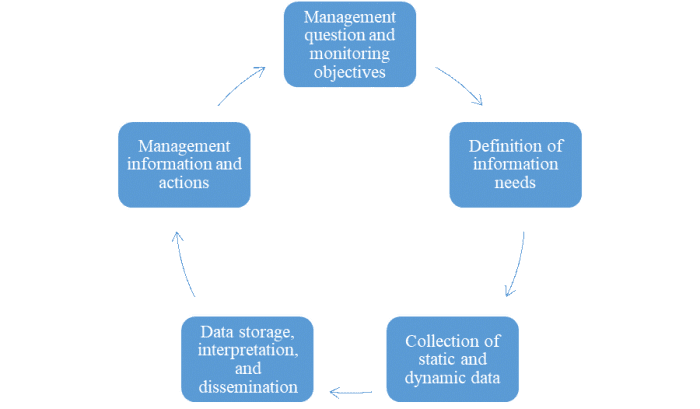
Figure 2: The Groundwater Monitoring Cycle.
Standardization of data formats and data digitalization.
Historically, groundwater data has typically been stored in formats such as spreadsheets, text files and other flat files resulting in an inefficient mode of storage.
There are many reasons why this method of storage is not conducive to reliable data, the main one being that data cannot be retrieved, used, and checked easily. Very often data are in inconsistent formats, which limits usage.
Moreover, offline systems limit accessibility, yet online systems ensure wider audience, thereby facilitating stakeholder engagement and wider dissemination of groundwater data.
The added benefit is that updates are always available to all users. This would ease best practices, starting with professional collaboration, information exchange and development of shared understanding, and initiation of joint management programs on groundwater resources.
The study recommends that in order to gain the highest benefit from monitoring information, suitable structures for information exchange between the different responsible institutions, water-user organizations, corporations, and non-profit entities be established.
The entities would first of all have to ensure harmonization of their groundwater monitoring networks’ design, standards, quality control, data storage, and processing. This means, for example, in order to assess trends in groundwater quality, the definition of trends, the sampling procedures, and chemical and numerical analysis should be comparable across various entities.
Such network will require national commitment from various stakeholders to monitor and report groundwater aquifer data on periodical basis. These procedures on groundwater monitoring should be fundamentally used and produced by each organization, i.e., procedures on design of sampling programs and sampling techniques.
This will make comparisons between datasets easier, if based on commonly agreed definitions. Setting groundwater standards will ensure that groundwater is monitored and evaluated across Uganda in a harmonized way.
This will enable various entities to collect, record, analyze, manage, and archive hydrological and meteorological data in accordance with generally accepted procedures consistent with applicable scientific and technical standards of practice.
Published data should be available to all stakeholders in either print version or readily downloadable formats. It is important to disseminate the results of monitoring together with the conclusions drawn for groundwater resources management among all stakeholders and the affected population in order to achieve agreement on necessary counter-measures.
The various stakeholders should be obliged to publish monitoring data. It must be agreed between all involved stakeholders how and at what frequency data are to be published. Often, monitoring involves decisions concerning groundwater resources management of national interest.
Therefore, the highest demand for comprehensive groundwater monitoring information is most commonly generated at national level. The best option is to collect and analyze all monitoring data at a high-ranking governmental institution, which is also responsible for such management decisions and has the backing to implement them. The overlapping of competences should be avoided. Thus, DWRM is best suited for this role.
Improvement of functionality of monitoring stations.
The study noted a number of monitoring stations that were out of service due to vandalism. This is a big challenge since unscrupulous individuals get attracted by solar panels and batteries.
This renders the stations non-operational, creating data gaps. The study recommends exploring alternative options that are unattractive to thieves, for example using the main grid as an alternative to batteries and solar panels. It further recommends the immediate re-establishment of the stations since extended periods of non-functionality will create huge data gaps that will be difficult to bridge.
Systematic and long-term data collection and storage.
The study noted piecemeal, project-wise, and discontinuous records, most of which were relatively short period (generally less than 5 years). In this case, discontinuous hydrological records are not effective in seeking to inform sound groundwater management decisions.
The study recommends instituting continuous automatic recording systems to periodically record time series data. Continuous measurements will involve the installation of automatic water sensing and recording instruments that are programmed to make measurements at specified frequencies.
Continuous monitoring provides the highest level of resolution of water-level fluctuations. Hydrographs constructed from frequent water level measurements collected with continuous monitoring equipment can be used to accurately identify the effects of various stresses on the aquifer system and to provide the most accurate estimates of maximum and minimum water-level fluctuations in aquifers.
Typically, collection of water-level data over one or more decades is required to compile a hydrological record that encompasses the potential range of water-level fluctuations in an observation well and to track trends with time. The availability of long-term water-level records greatly enhances the ability to forecast future water levels.
Effective policy legislation on water safety planning and monitoring implementation.
Policy loopholes around the lukewarm adoption of water safety plans pose public health threats due to contamination risks. Water safety planning entails compilation of robust assessment of the likely risks that can compromise the microbial, chemical, and physical quality of water, resultantly likely to cause public health concerns from catchment to the consumer chain.
As such, all sections of the water supply plant from water abstraction, treatment, distribution, to the consumer, would be critically analyzed to foresee likely risks that may compromise the quality of water at each point.
These can then be graded in terms of magnitude and likelihood of occurrence, and respective mitigation measures that can be implemented to maintain the quality of water. In order to guarantee sustainability of the quality of water, it would be important that entities draw up water safety plans, strictly monitor their implementation, and routinely review them.
Enforcement of compulsory on-going real-time monitoring should be emphasized, especially in urban settings with a lot of poorly constructed and maintained on-site sanitation systems that continue to degrade and contaminate the resource.
This will also help guide if entities are over abstracting beyond their allowable limits, while for wastewater discharge it will ensure it is within allowable limits. This in turn will help generate revenues in fines, penalties for the regulators, while strict enforcement of fines will deter intentional pollution and over abstraction by wastewater discharging industries and water users respectively.
Real-time information of water quality and quantity will enable the regulator to adjust allowable abstraction limits for the different users accordingly, e.g. by reducing allowable limits during times of water scarcity.
Conclusion
The focus of this research has been to illustrate the importance of the systematic and long-term collection of water-level data. Such data are crucial to the investigation and resolution of many complex water resources issues commonly faced by hydrologists, engineers, water-supply managers, regulatory agencies, and the public.
Despite the obvious benefits of groundwater monitoring, the situation in Uganda is far from satisfactory. Efforts must be intensified to gather fundamental groundwater data, organizing them appropriately, and disseminating them to those who may need them. In addition to monitoring, institutional arrangements regarding data provision and exchange are also necessary.
Over-extraction and pollution of groundwater resources calls for sophisticated water treatment technologies, raising treatment costs for utilities, and tariffs to consumers.
This implies that consumers access water at increased prices, affecting their savings. However, low-income earners, who cannot afford the treated water, resort to contaminated water sources, resulting in waterborne diseases, deaths, and high medical bills, altogether increasing their household expenditures.
This negatively affects them economically. For water intensive industries, such as water bottling and beverage companies, low volume of the required quality of process water leads to scaling down of production capacities, which affects revenues and business sustainability. This leads to staff layoff, affecting several workers and their dependents economically.
The implementation of groundwater monitoring programs will be crucial for well-guided industrial and domestic water resources allocation and planning. Additionally, it will ensure sustainable access to quality water and serve as an early warning system, thus safeguarding the health of communities.
Monitoring will be key to the sustainability of water dependent sectors such as agriculture, tourism and leisure (beaches and swimming pools), and the manufacturing sector. It will instill a sense of responsibility and compliance by water abstraction and wastewater discharge permit holders.
This will be key towards water sustainability and water security for future generations. Consequently, industries will have sufficient and sustainable quality and quantity of water resources to run their operations, guaranteeing job security for their workers, leading to economic development and financial prosperity.
However, in the unfortunate event of non-compliance and suspension of their operations by the regulator, this would mean closure of business operations and loss of jobs for the workers. Sustainable and responsible water use abstraction will go a long way to address water crises and conflicts in areas with low water access, such as arid land areas, refugee settlements, and urban slum areas.
From the research findings, it is clear that we on the edge of an abyss and moving in the wrong direction, should we continue to exploit water resources without monitoring systems in place.
Our groundwater reserves have never been more threatened. Groundwater data acquisition systems are an urgent need, whose prime importance to groundwater sustainability cannot be overemphasized.
The research study concludes that the advent of telemetric systems that make long-term continuous capture and long-term storage of records serve a magic bullet to help address fragmented data, while offering many advantages in terms of quality control and reduced human errors.
It is undeniable that sound decision making on how to allocate groundwater now and in the future requires comprehensive, accurate, and timely information.
References
Grönwall, J. 2016. Self-supply and accountability: To govern or not to govern groundwater for the (peri-) urban poor in Accra, Ghana.
Gaye, C.B.; Tindimugaya, C. 2019. Review: Challenges and opportunities for sustainable groundwater management in Africa.
Lapworth, D.J.; Nkhuwa, D.C.W.; Okotto-Okotto, J.; Pedley, S.; Stuart, M.E.; Tijani, M.N.;Wright, J. 2017. Urban groundwater quality in Sub-Saharan Africa: Current status and implications for water security and public health.
Petit, O. 2016. Paradise Lost? The difficulties in defining and monitoring Integrated Water Resources Management Indicators.
WHO. 2017. Global Status on Water Safety Plans: A Review of Proactive Risk Assessment and Risk Management Practices to Ensure the Safety of Drinking Water.
Kanyesigye, C.; Marks, S.J.; Nakanjako, J.; Kansiime, F.; Ferrero, G. 2019. Status of water safety plan development and implementation in Uganda.
Bonsor H C, Oates N, Chilton P J, Carter R C, Casey V, MacDonald A M, Calow R, Alowo R, Wilson P, Tumutungire M, Bennie M. 2015. A Hidden Crisis: Strengthening the evidence base on the sustainability of rural groundwater supplies – results from a pilot study in Uganda.
UNC Water Institute WaSH Policy Research Digest Issue #3, March 2016. Detailed Review of a Recent Publication: Getting hand pump functionality monitoring right can help ensure rural water supply sustainability.
Bonsor, H., MacDonald, AM., Casey, V., Carter, R., Wilson, P. 2018. The need for a standard approach to assessing the functionality of rural community water supplies.
Liddle, ES., Fenner, R. 2017. Water point failure in Sub-Saharan Africa: The value of a systems thinking approach.
Tuinhof, S. Foster, K. Kemper, H. Garduño, M. Nanni, 2006. Groundwater monitoring requirements for managing aquifer response and quality threats.
Thomson, P., Hope, R. Foster, T., 2012. GSM-enabled remote monitoring of rural hand pumps: a proof-of-concept study.
Montgomery, M.A., Bartram, J., Elimelech, M., 2009. Increasing functional sustainability of water and sanitation supplies in rural Sub-Saharan Africa.
https://www.charitywater.org/our-work/sensors.
https://lifelinefund.org/can-a-gadget-revolutionize-the-sustainability-of-rural-water-supply/.



